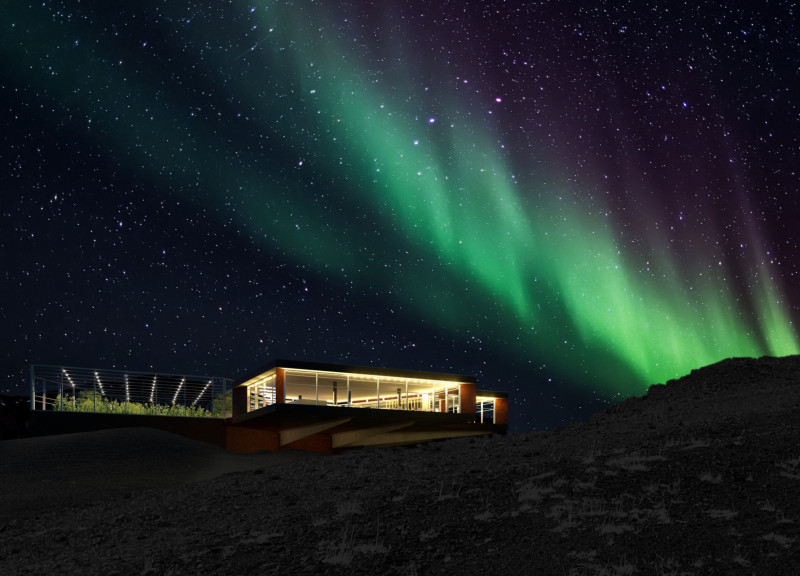5 key facts about this project
The Iceland Greenhouse Restaurant is located on a gentle slope that offers a broad view of the Icelandic landscape, including the Hverfjall volcano. It serves as both a dining establishment and a multifunctional space. The design concept draws inspiration from the region's basalt rock formations, creating an experience that connects visitors to the natural environment.
Function and Spatial Organization
The structure is divided into distinct areas, referred to as "cells," each dedicated to a specific purpose, such as the restaurant, greenhouse, kitchen, technical room, staff office, and multipurpose hall. This arrangement allows for efficient use of space while enhancing the interactions among different functions. The varying heights of the cells create an organic look that mirrors the surrounding geological features.
Natural Light and Experience
A key aspect of the design is the incorporation of large panoramic windows facing south-east, south, and south-west. These windows bring ample natural light into the building and create a visual connection with the outdoor landscape. A glass-roofed corridor runs through the space, facilitating movement and exploration. This corridor allows occupants to enjoy both the sky above and the views of the land surrounding them.
Materials and Construction
Though specific details on materials are limited, the design includes glass for the windows and roof, which emphasizes transparency and openness. Concrete and compacted sand contribute to the building's stability and durability, while XPS styrofoam is used for insulation, ensuring comfort in varying weather conditions.
Design Detail
An interesting feature of the building is the pathway next to the greenhouse, which ends at a dead-end. This design choice hints at the possibility of future expansion, encouraging a sense of curiosity. It invites a dialogue between the built space and the natural landscape, suggesting that the restaurant may evolve over time while maintaining its connection to the environment.






















































